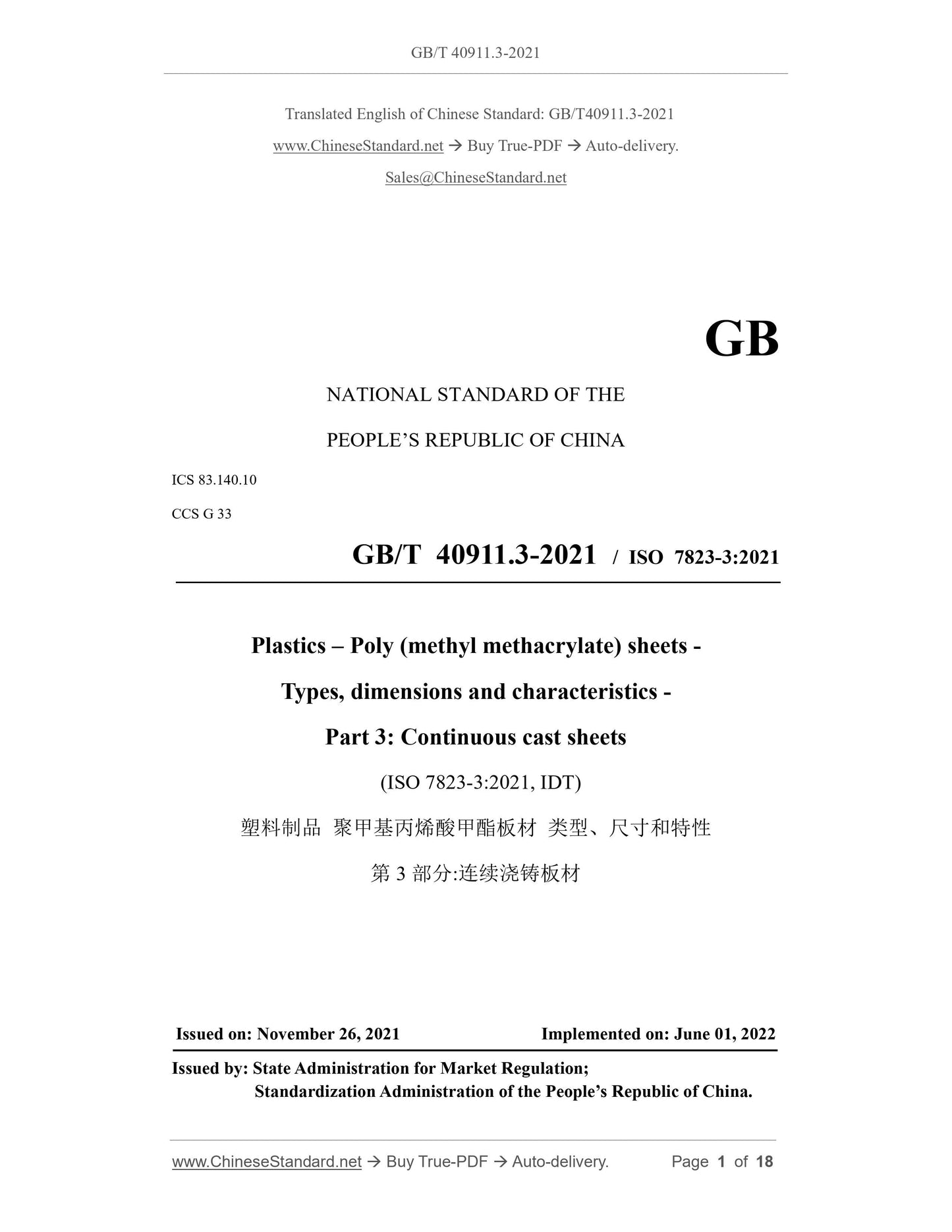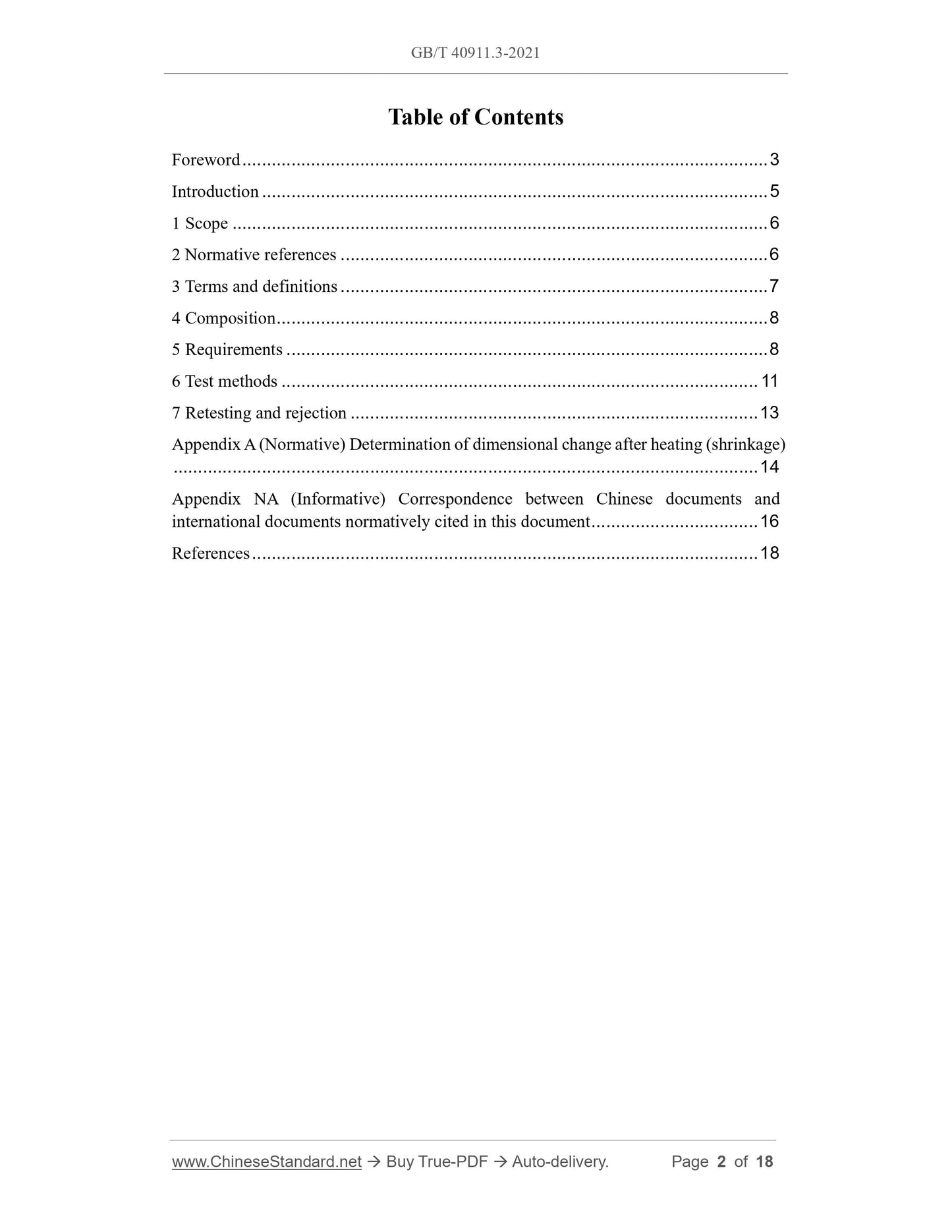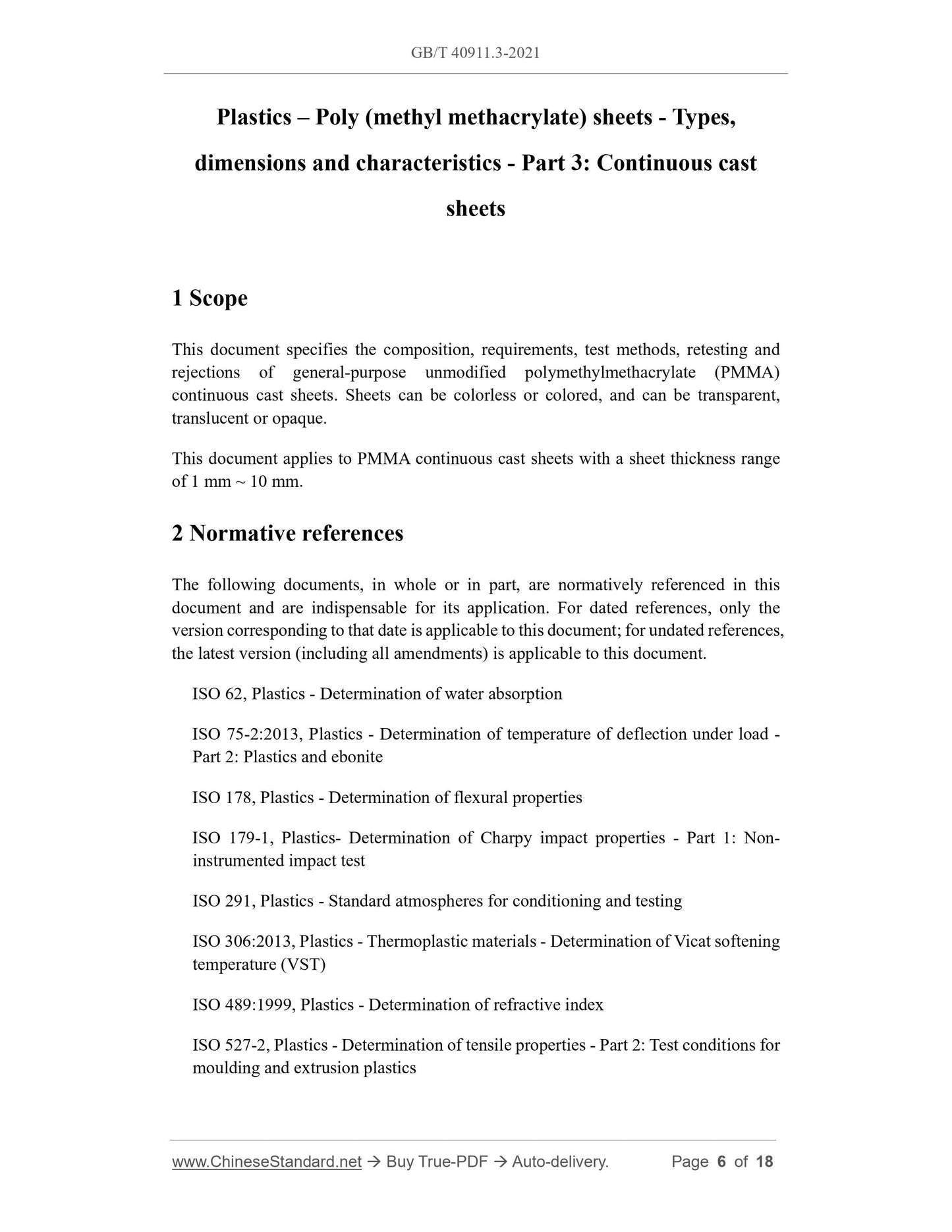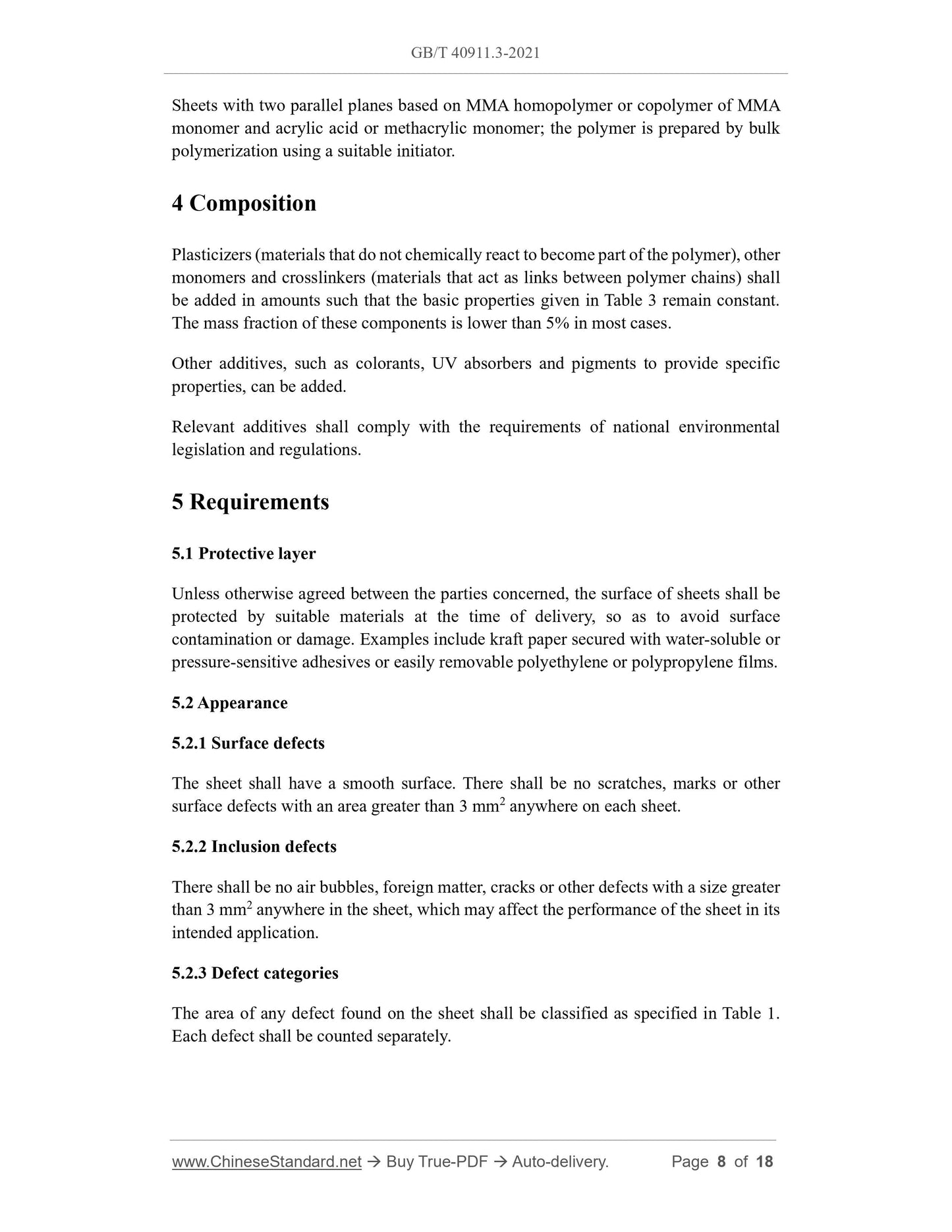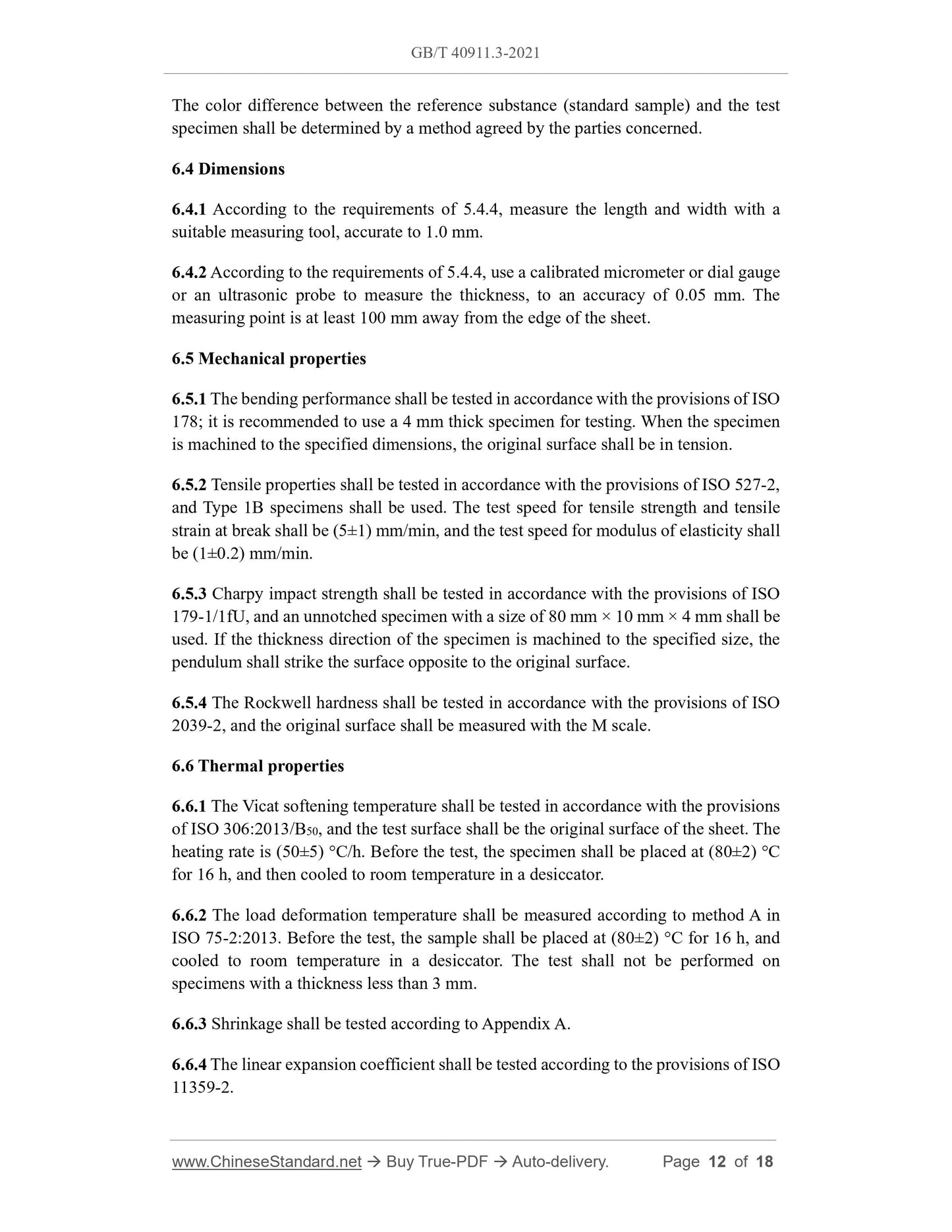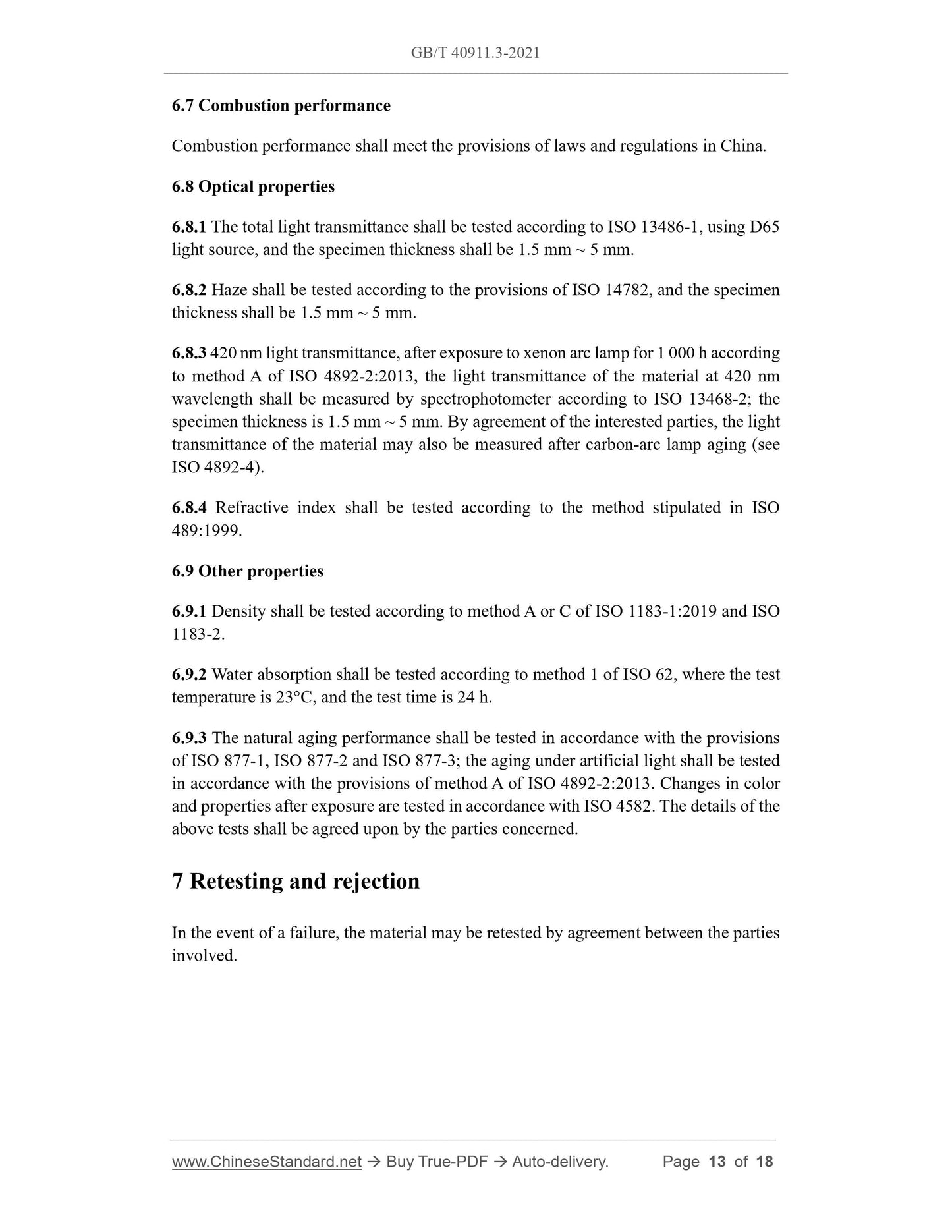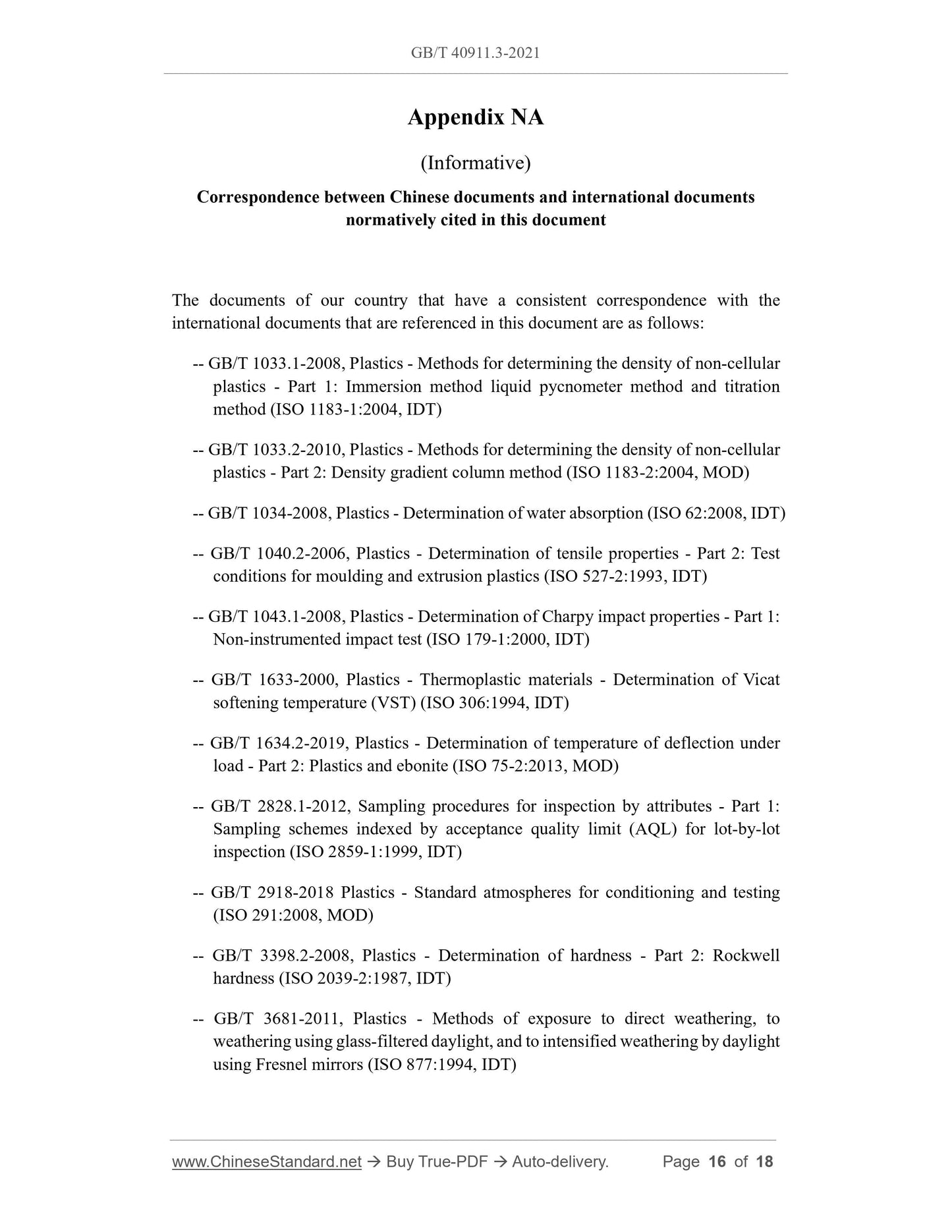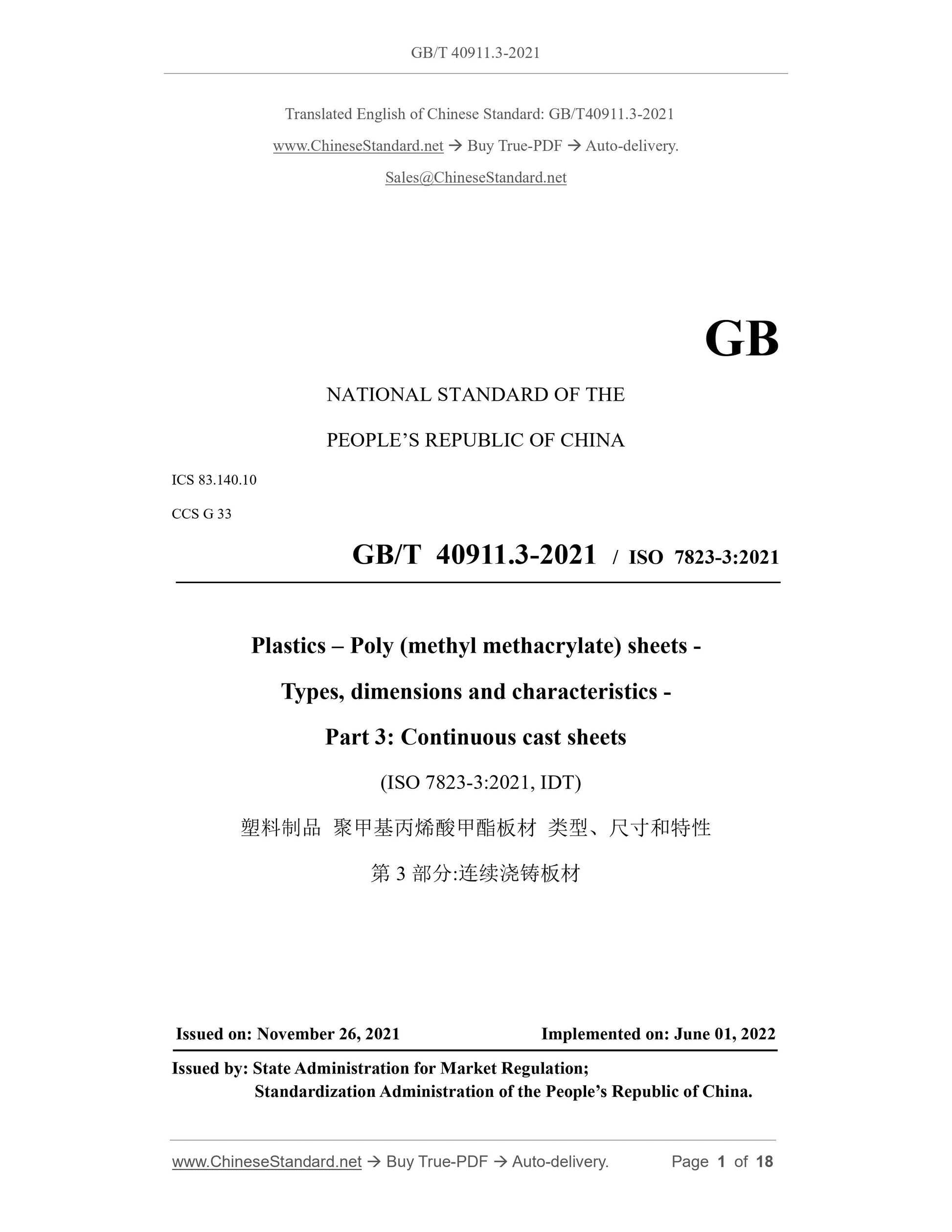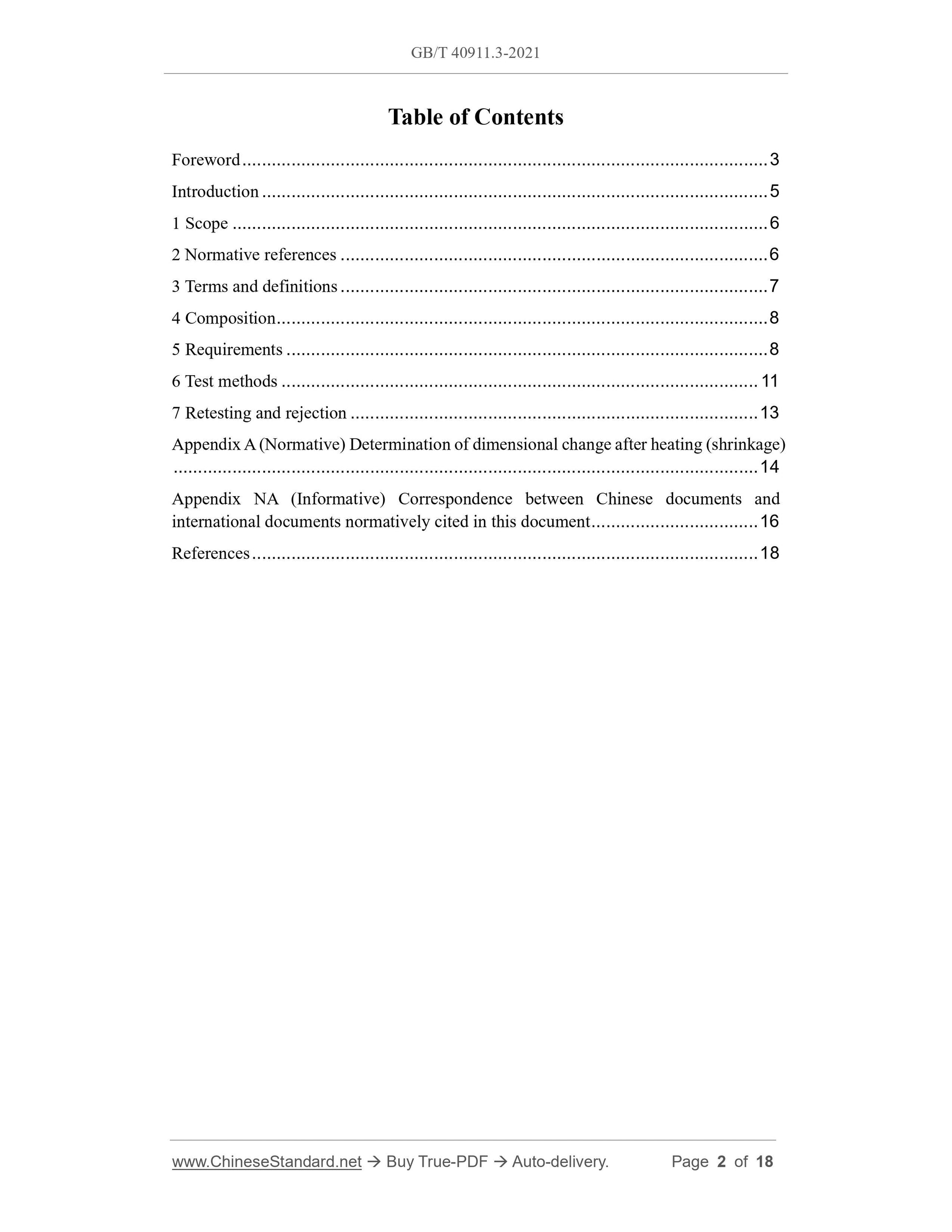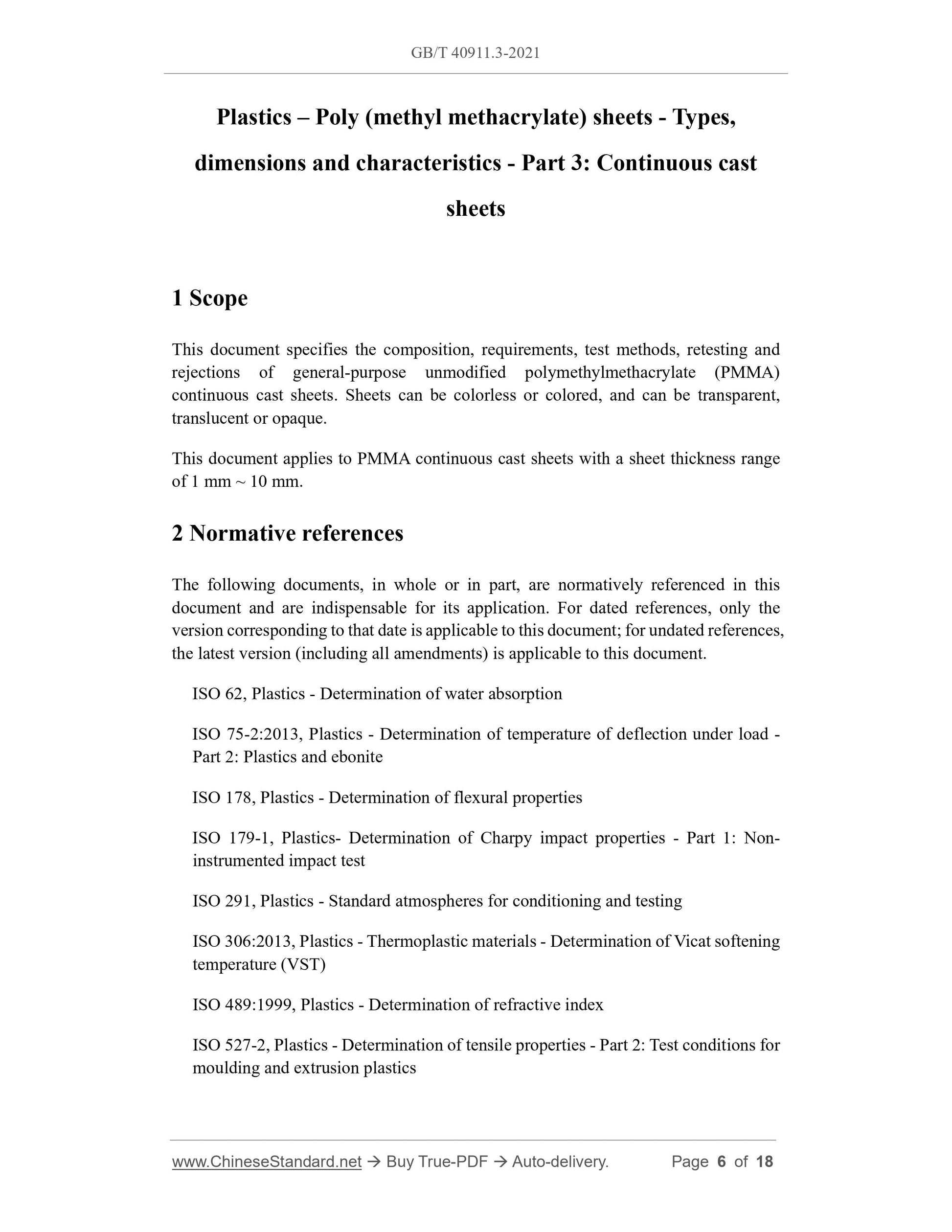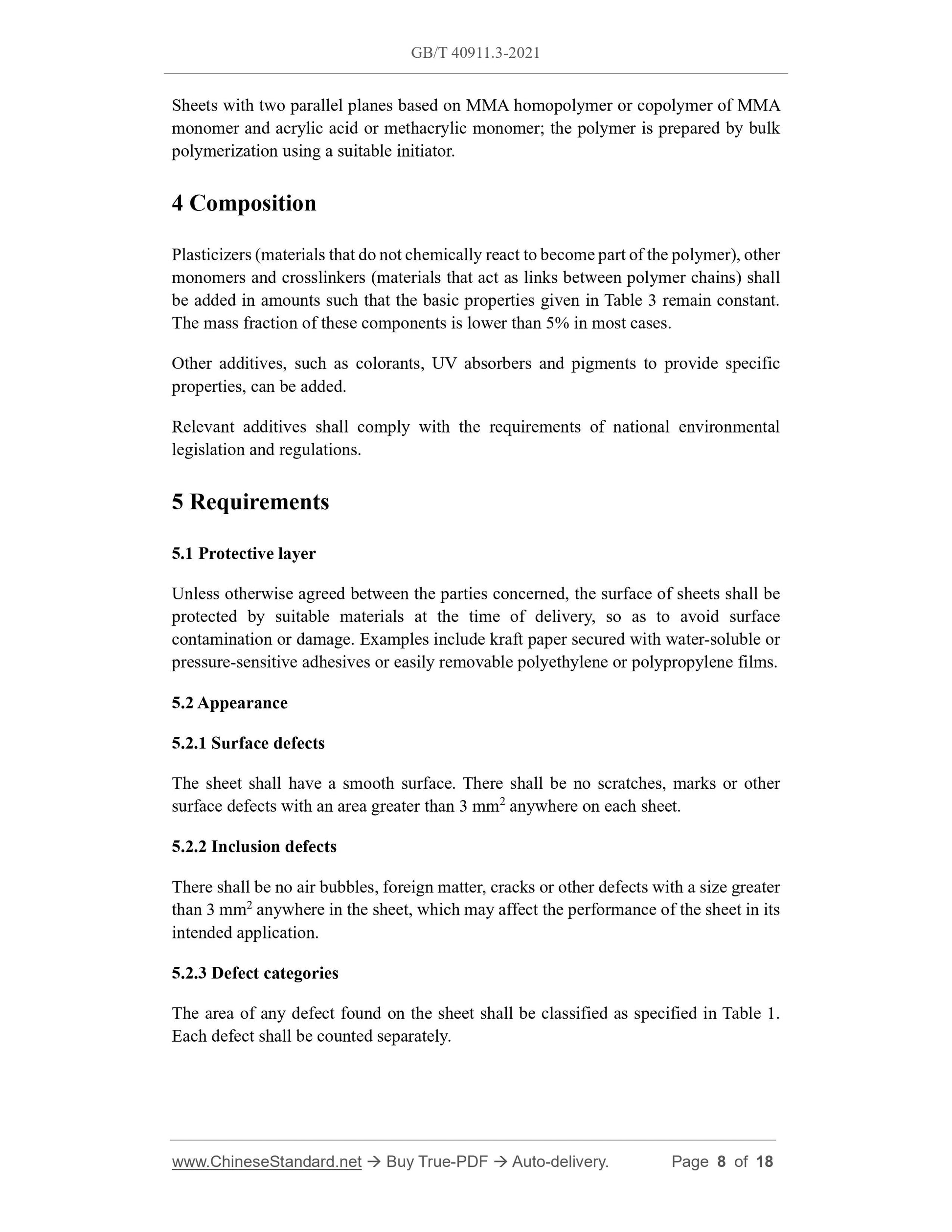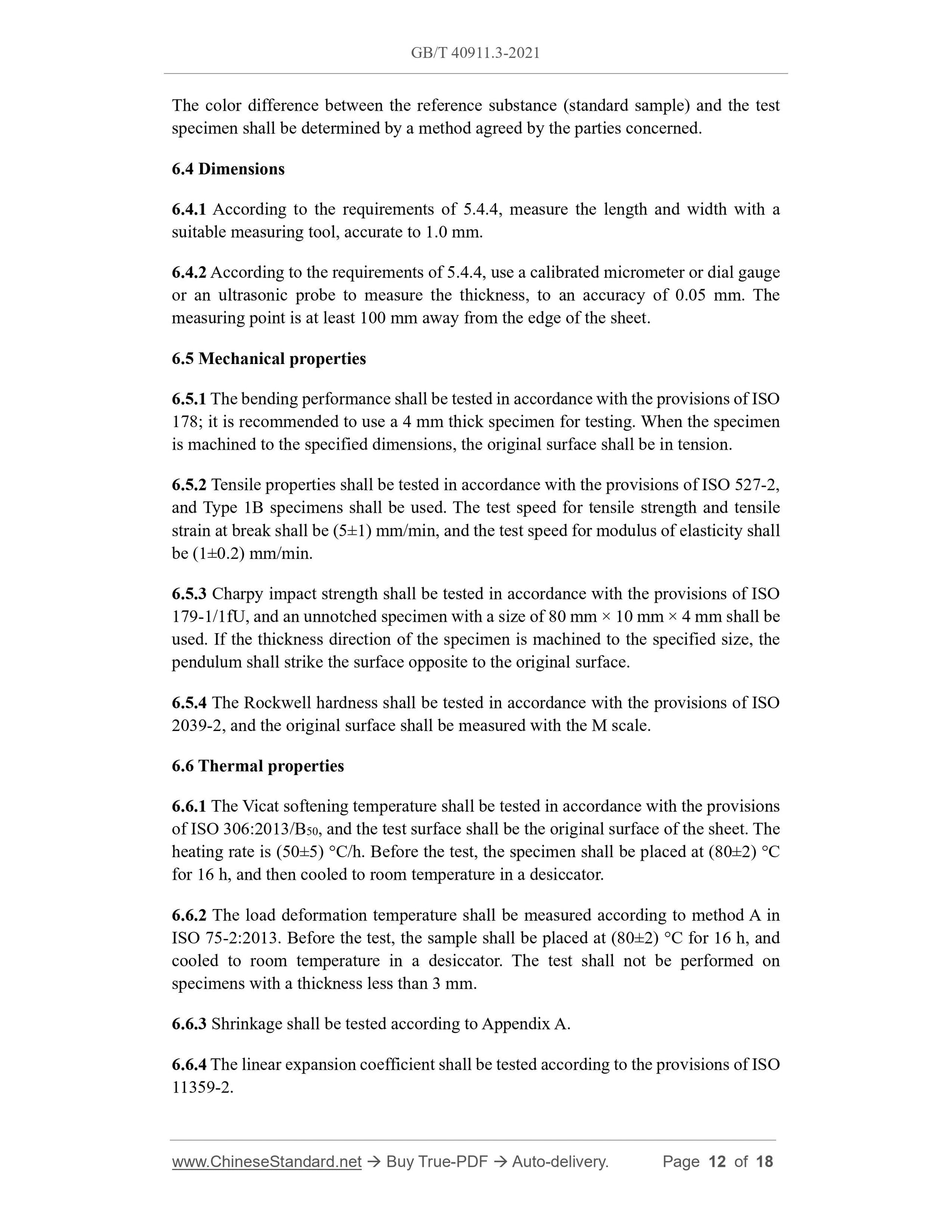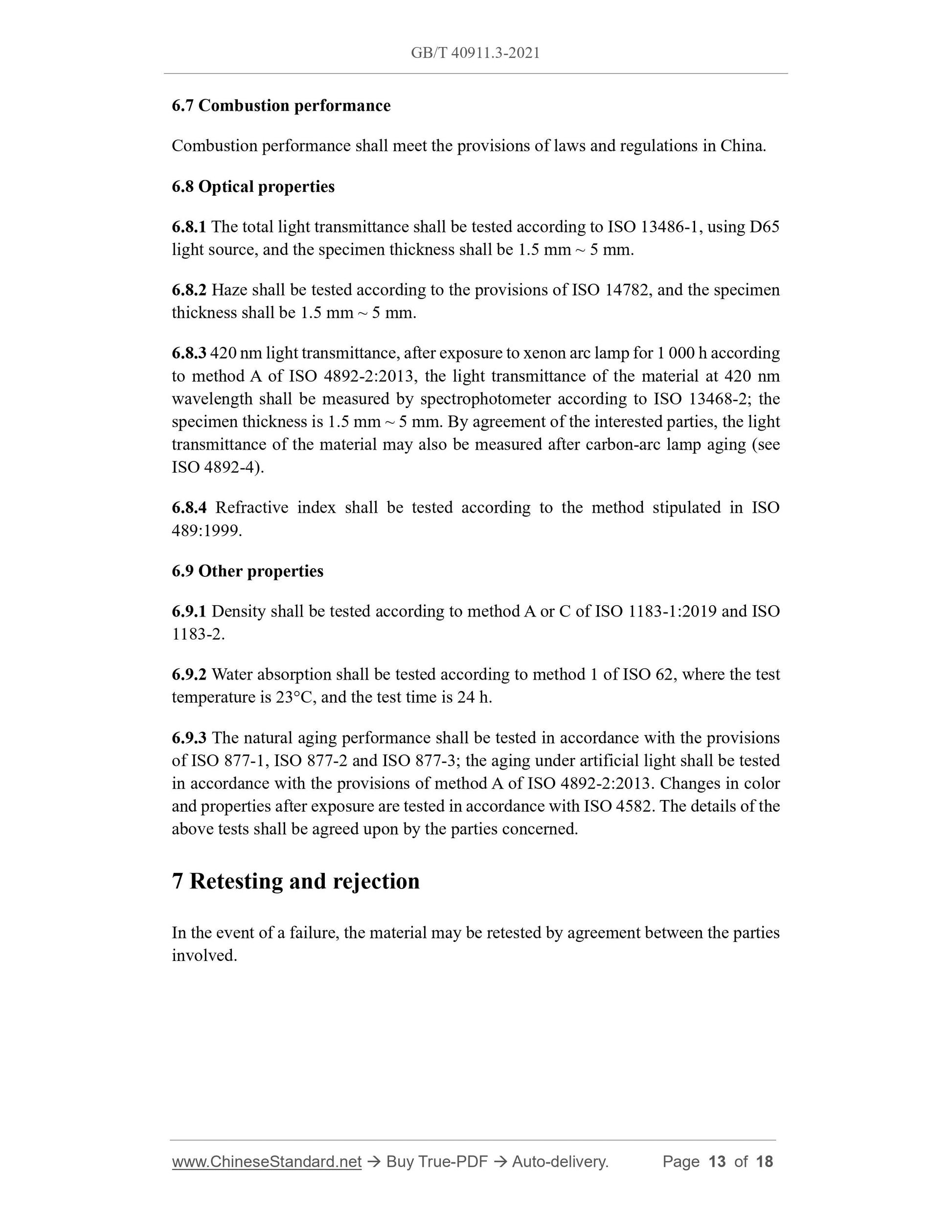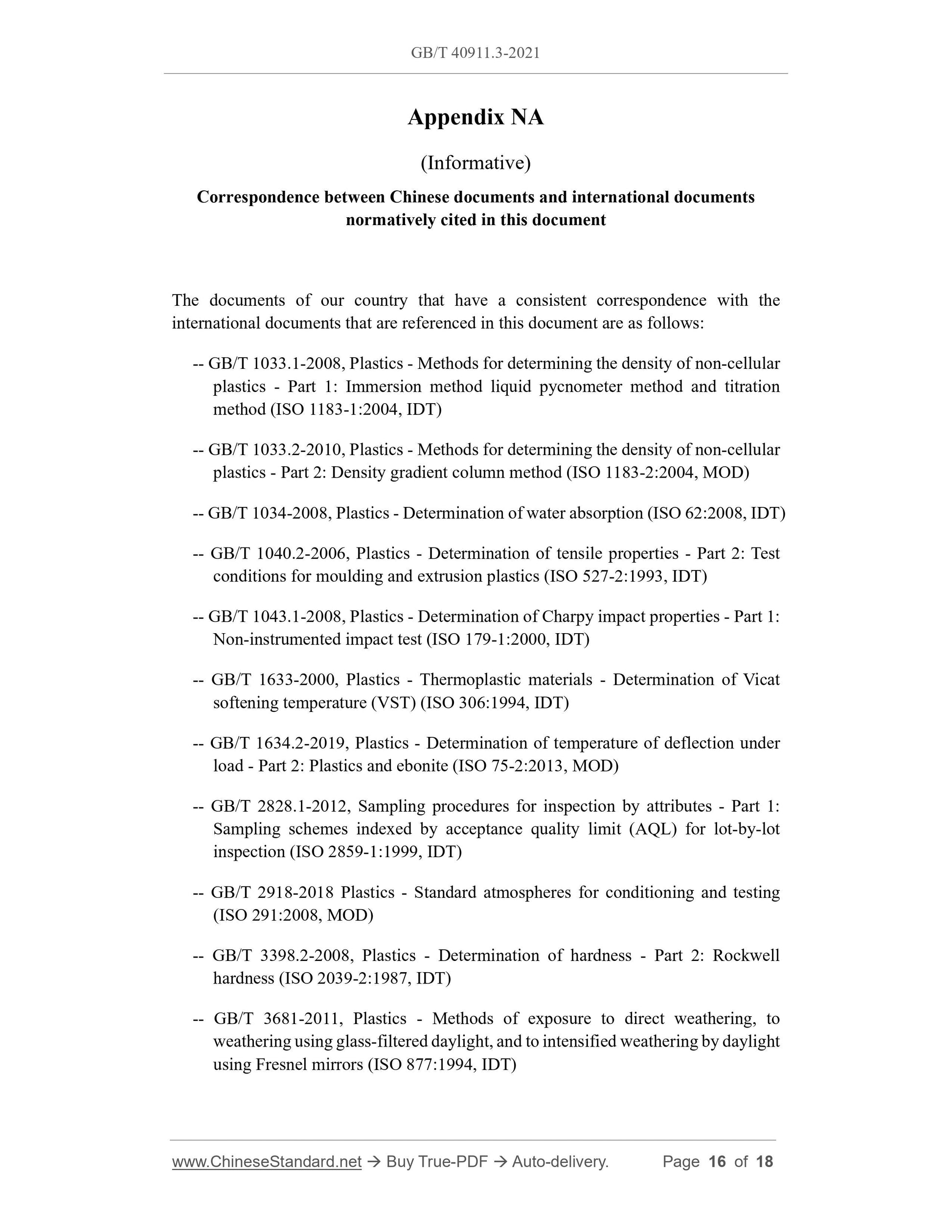1
/
of
7
www.ChineseStandard.us -- Field Test Asia Pte. Ltd.
GB/T 40911.3-2021 English PDF (GB/T40911.3-2021)
GB/T 40911.3-2021 English PDF (GB/T40911.3-2021)
Regular price
$205.00
Regular price
Sale price
$205.00
Unit price
/
per
Shipping calculated at checkout.
Couldn't load pickup availability
GB/T 40911.3-2021: Plastics - Poly(methyl methacrylate) sheets - Types, dimensions and characteristics - Part 3: Continuous cast sheets
Delivery: 9 seconds. Download (and Email) true-PDF + Invoice.Get Quotation: Click GB/T 40911.3-2021 (Self-service in 1-minute)
Newer / historical versions: GB/T 40911.3-2021
Preview True-PDF
Scope
This document specifies the composition, requirements, test methods, retesting andrejections of general-purpose unmodified polymethylmethacrylate (PMMA)
continuous cast sheets. Sheets can be colorless or colored, and can be transparent,
translucent or opaque.
This document applies to PMMA continuous cast sheets with a sheet thickness range
of 1 mm ~ 10 mm.
Basic Data
| Standard ID | GB/T 40911.3-2021 (GB/T40911.3-2021) |
| Description (Translated English) | Plastics - Poly(methyl methacrylate) sheets - Types, dimensions and characteristics - Part 3: Continuous cast sheets |
| Sector / Industry | National Standard (Recommended) |
| Classification of Chinese Standard | G33 |
| Word Count Estimation | 13,172 |
| Issuing agency(ies) | State Administration for Market Regulation, China National Standardization Administration |
Share
